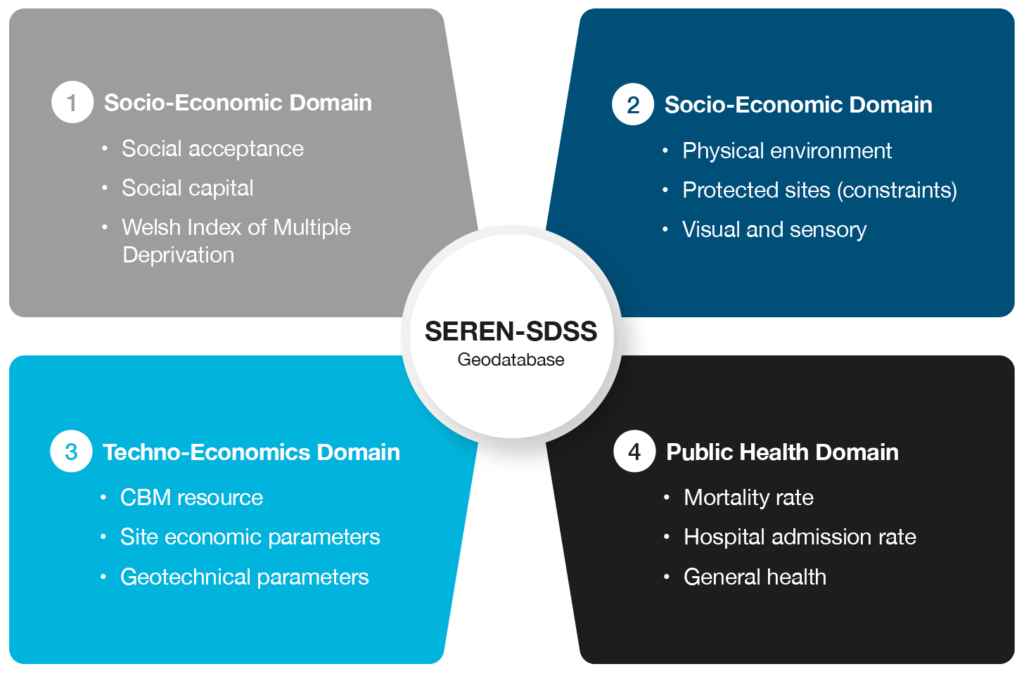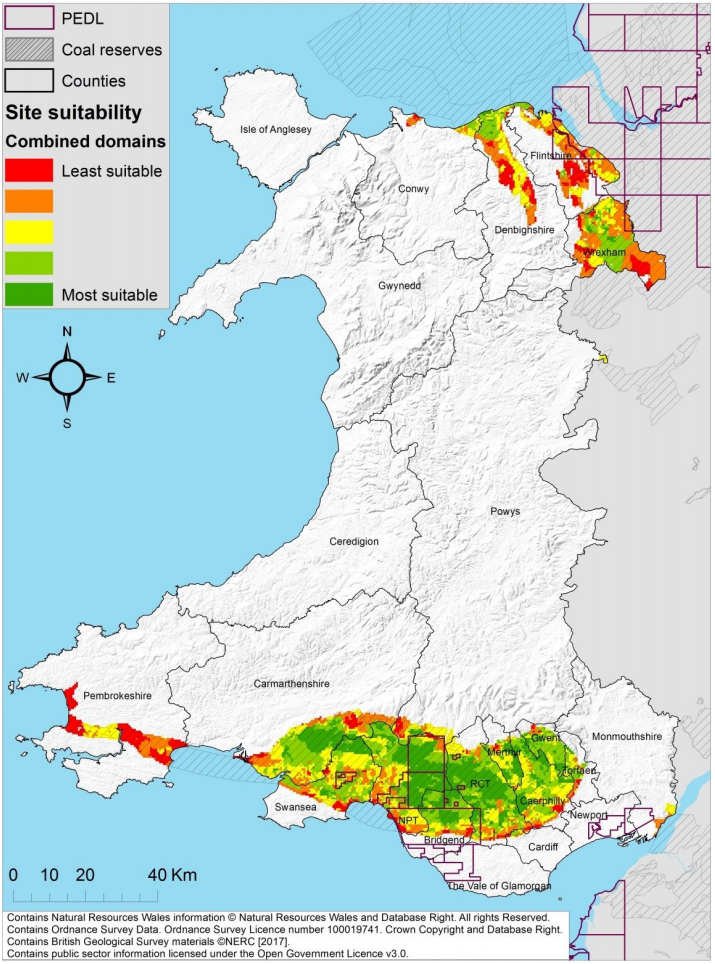Using Software to Maximise the Public Benefits of Coal Bed Methane Site Selection
Coal Bed Methane is a source of energy which has the potential sustain society and keep the lights on, at half the carbon output of burning coal, whilst we transition to a net-zero society. But selecting sites for Coal Bed Methane extraction is not as simple as picking the places richest in methane or where its easiest to get to. There is a complex multi-criteria approach required that considers socio-economic, technological, environmental, and public health factors.
Researchers at Cardiff University have created an advanced software tool to help decision makers navigate the interdependent factors that go into site selection for possible Coal Bed Methane extraction.
A Greener Alternative to Coal
Coal is a matrix of tiny pockets and larger fractures. These gaps in the coal are filled with methane and trace amounts of other gases such as nitrogen and CO2. Coal mining in the 19th and 20th century was a dangerous business because of the presence of these explosive and suffocating gases – hence the term “Canary in the Coal Mine”. Traditionally, breaking the coal up as it gets mined out of the ground would vent these gases into the mine and then they would be pushed out of the mine and into the atmosphere. In today’s coal mining regions, bore holes are drilled from the surface to vent these gases ahead of the mining process in order to make it safer.
But rather than just venting the methane to the atmosphere, where it will have an immediate greenhouse gas effect orders of magnitude worse than carbon dioxide, what if we could capture the methane and put its energy to use?
This is the idea behind a process called Coal Bed Methane extraction, or ‘CBM’. It is far greener than burning coal for energy, producing around half of the CO2. In today’s world where countries are moving away from coal as a source of energy, CBM becomes even more relevant as it can continue to provide energy and jobs whilst leaving the coal in the ground in the first place.
Furthermore, it is local. Local energy sources are not only important for national security and independence, but it is also greener to use fuels that are produced closer to home. Shipping fuel thousands of miles around the world, like in the case of oil and liquid natural gas imports, has its own carbon footprint and requires extensive infrastructure. Locally produced fuels therefore have a smaller carbon footprint as they do not have to travel as far from production to use.
Intricate Selection Criteria
However, companies cannot simply go around plucking coal bed methane out of the ground wherever they find it – getting the right CBM site is a complex process. There must be a carefully crafted balance between the technological and business viability of the site as well as social, environmental and local economic aspects.
The current site selection process in Europe is primarily one driven by committees of stakeholders and experts. It is often the case that the loudest voice of interest or concern steers the ultimate decision, whether that is a regionally specific business, public, economic or social concern.
When planning any sort of industrial site or infrastructure, protection of local scenery and careful development in the open countryside play important roles in social acceptability and gaining regional planning consent. CBM sites would typically have a lower visual footprint than a traditional coal mine, but none the less need consideration. Protecting the aesthetics of an area is not only important for the enjoyment of the local community and future generations, but also the protection of environmentally linked economies like tourism and leisure. Environmental protection also extends to factors including ecology, biodiversity, agriculture and public health. For CBM sites, handling of by-products and ensuring the protection of the local water table are of interest arising from the fact they work within the geoenvironment (eg, underground).
Public health considerations are of vital importance in site selection. Just like areas of environmental strain, public health can be strained at local levels due to factors like access to vital services, deprivation and air pollution from transport or heavy industry. Areas that score low on public health metrics make for poor site selection where it is unwise to create further industrial activity and infrastructure.
Through careful planning, CBM sites can be a positive force for inward investment and redevelopment of underserved communities, supporting the local economy, creating jobs and building infrastructure. Having the correct skilled labour in place is important, both for the financial viability of the site but also to ensure that the site can hire locally and invest wages into the local community rather than bringing in workers who may not live in the immediate region.
The geology below ground plays important role in how costly it will be to reach the CBM using a borehole, just as the terrain above ground controls how easy it is to construct the site and get vehicles and machinery onto. Companies must consider the payoff of how much methane there will be to extract versus how difficult it will be reach, carefully balancing project costs.
Another major consideration is the locality with consumers. How nearby are major methane users? Places like towns, cities, or large industrial sites like cement manufacture. Or otherwise, how far must the methane be transported before it can be put into the national gas grid, and what local transport links are available?

A Software Centric Solution; SEREN-SDSS
Natural Resources Wales commissioned Cardiff University`s Geoenvironmental Research Centre (GRC) to carry out an investigation into the potential for CBM production in Wales, and the potential impact of the production on socio-economic, environmental and public health issues.
The study has been carried out using the Seren Spatial Decision Support System (Seren SDSS), a software tool developed by the GRC as a part of the Seren project. Seren SDSS has been developed to support the decision-making needed to address complex problems related to geo-energy applications such as site selection, site ranking and site impact assessment. Seren SDSS combines different GIS, artificial intelligence and multicriteria decision analysis techniques as well as enabling spatial knowledge discovery. This bespoke tool operates in an integrated manner, considering environmental, socio-economic, public health and techno-economic domains.

Study of the potential impact of onshore Coal Bed Methane production in Wales (Irfan, 2017)
Locality of Supply and Demand
When the location of CBM sites and major methane/natural gas consumers coincide, there are advantages for both economics and decarbonisation. This is particularly true for the FLEXIS Demonstration Area and wider South Wales Coal Field. Major cement, materials and chemical manufactures operate within the demonstration area, making use of the proximity of the South Wales Gas Pipeline which is the UK’s largest high-pressure gas pipeline. Using CBM to supplement the gas consumption at these sites within the demonstration area could help reduce the dependency on imported natural gas as well as reducing the carbon footprint of the fuel by reducing the need to ship the natural gas from other area of the world.


